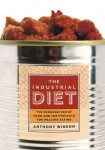At a plain beige Parliamentary cafeteria where Canada’s leaders take their lunch there is a salad bar with fresh greens, chickpeas, beets and whole broccoli, sometimes artichoke hearts. It is the most colourful table in the place. Further down is a grey deep fryer that sells salted, fat-laden potatoes and meats. Can you guess which has the line-up every day at noon?
In examining the national diet, Professor Anthony Winson of the University of Guelph laments the “nutritional degradation of food”. It is not food at all, Winson writes, but “edible commodities that too often subvert our well-being and promote disease instead of nourishing us.”
Soft-drink consumption in Canada has increased 50% in a generation. The incidence of diabetes in Ontario alone has risen from 6.6% of the population to 10.5% in a decade. Nationwide Canadians spend $2 billion a year on confectionery, where profit margins average 35 percent. Industrial Diet notes this is neither new nor unique. Consumption of sugar in the U.K. first spiked in 1844 and has risen almost annually ever since except for periods of wartime rationing.
Yet neither Winson nor other food critics can escape the fact of the Parliament Hill cafeteria: nobody forces Canadians to put salt, fat and sugar in their mouths.
In The Industrial Diet Winson faces the question plainly: “There is almost always room for the exercise of individual responsibility, yet this view utterly fails to explain why so many individuals began making bad dietary decisions over the last twenty years or so, the period during which obesity has come to be a first-order health issue.”
This is exactly the point.
Does Wendy’s Baconator burger have to carry 1500 milligrams of salt? Does Subway Inc. have to pour 16 teaspoons of sugar into its combo meal? Did Burger King have to lard up the Triple Whopper with 1240 calories?
Prof. Winson toured southern Ontario supermarkets with a tape measure and calculated up to 37% of shelf space for edibles is occupied by “pseudo foods”, he calls them: sugar water, potato chips, cookies, candy, bulk chocolates. In the breakfast section up to 80% of shelf space is devoted to pre-sweetened cereals. Eighty percent of checkouts had displays of candy, chocolate and salty snacks.
Winson’s research took him to grocery stores in his hometown Guelph, Ont. and nearby Kitchener, Waterloo and Cambridge, but the effect is the same in Anytown, Canada, he says. The phenomenon of consumers everywhere eating identical foods purchased at identical places is a touchstone of the culture: “The market, dominated as it is in the food sector by so few powerful players, offers little in the way of real freedom of choice in the first place. The apparent diversity of product lines is undercut by the fact that in almost any product category, the majority of product lines are owned by a few food industry giants.”
Winson dates our enthusiasm for industrial food to the 19th century roller mills that unfortunately removed so much nutrient-rich bran and wheat germ from bread and flour that millers had to add vitamins and call it enriched: “I see the industrialization of flour milling as lying at the core of the first industrial dietary regime,” he writes.
By 1911 the market was controlled by Canada Bread Co., a conglomerate of five corporations in Montréal, Toronto and Winnipeg that drove ruinous price wars against independent bakers and in just one year, 1914, saw a 78 percent gain in revenues.
The company still operates as a subsidiary of Maple Leaf Foods Inc. Its legacy is instantly recognizable in any Canadian kitchen: the perfectly shaped, bland, spongy, fine-grained, bleach-white, bran-free $2 loaf that no baker could replicate at home.
By comparison, Industrial Diet is whole, colourful and rich in ingredients with an unmistakable kick that reminds Canadians: “It is perfectly possible to prepare delightful meals with ingredients that enhance, rather than damage, the health of those who consume them.”
By Holly Doan
The Industrial Diet: The Degradation of Food and The Struggle for Health Eating, by Anthony Winson; UBC Press; 352 pages; ISBN 9780-7748-25528; $32.95






